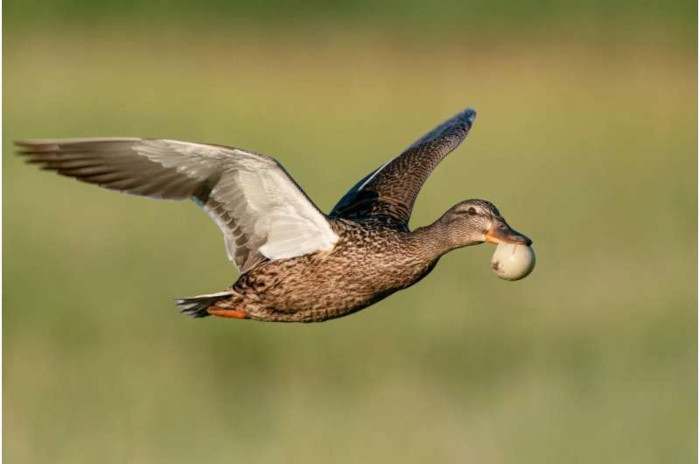Ignoring female birds harms scientific understanding

A new published study by several Audubon scientists shows that improving identification and observation of female birds can help scientists conserve birds and their habitats more broadly.
The study, published in Ibis, identifies ways in which failing to observe female birds in favor of their flashier male counterparts has resulted in erroneous findings, and offers recommendations for improving data collection.
"As a field, ecology has historically misunderstood, overlooked, or assumed female organisms are similar enough to males," said Brooke Bateman, senior director of climate and community science at the National Audubon Society and co-author of the study. "This results in potentially dangerous gaps in scientific understanding."
The study found that counter to traditional assumptions, reproductive roles are more balanced between males and females. For example, in many species, both sexes take on offspring-rearing. Females also produce birdsong, contrary to previous thinking that only male birds sing as a function of sexual selection. Following sociobiological biases, sex roles and behaviors where females are socially dominant or aggressive are also underreported.
"There is so much more that we can learn about birds, and about ecology in general, that we miss when we only focus on males, or assume that females are similar enough to males," said Joanna Wu, Ph.D. candidate at UCLA and the study's lead author. "That's why it's so critical that we encourage sex-specific questions in research."
Survival rates tend to be studied at a species level, even though female birds have lower survival than males. This is especially relevant for species that are at risk of population decline due to a lack of females. Female birds can also have different migration patterns, which can be especially critical in light of climate change, as changing temperatures could result in a mismatch of arrivals at breeding grounds.
Females may also not inhabit the same places as males. For example, female golden-winged warblers inhabit lower elevations than males in the non-breeding season. They have lost twice as much of their habitat than males due to logging. Balanced research can help inform conservation efforts.
Additionally, same-sex and multi-sex mating systems have been documented in birds, meaning that relying just on data representing a male-female binary excludes a broader spectrum of reproductive roles.
This study had its genesis with a group of birders, scientists, and ornithologists who decided to focus on identifying female birds. Calling themselves the Galbatross Project, the group founded Female Bird Day, encouraging observation and appreciation of female birds.
The report recommends improving female identification instruction, capturing birds during migration season rather than breeding season to increase the likelihood of observing females, and including options to record sex-segregated data in apps like eBird, which inform major ornithological institutions.
Robyn Shepherd, National Audubon Society
30 Jan 2025
More Information: F.E. Joanna X. Wu et al., "A focus on females can improve science and conservation," Ibis (2025). DOI: 10.1111/ibi.13386.
Share this story




